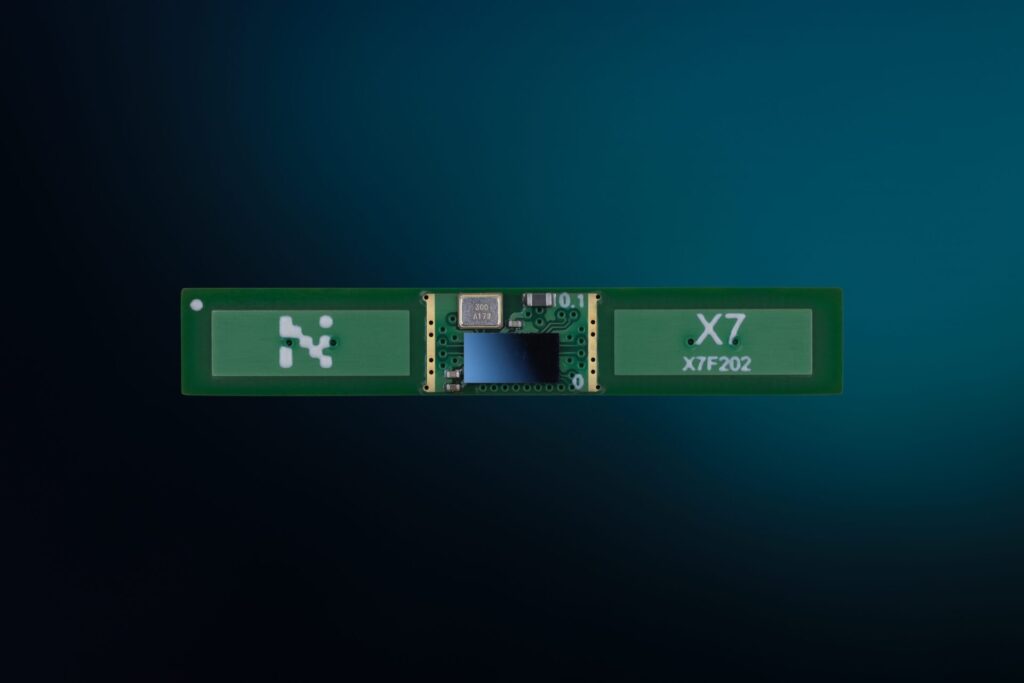A Challenger Appears: Why 2024 is the Year of Ultra-Wideband
Ultra-wideband (UWB) was once considered a niche but intriguing alternative to incumbent presence detection and tracking technologies, including radio-frequency identification (RFID), localization trackers and infrared sensors. Despite its unique advantages, the technology industry overlooked UWB until recently. Experts now project that UWB implementation will grow significantly, estimating UWB will have a higher compound annual growth rate (CAGR) than Wi-Fi or Bluetooth from 2023-2030, totaling 18 percent.

By Jean-Christophe Doucet, NOVELDA CCO
First Published on The Fast Mode
While UWB’s initial applications focused on peer-to-peer communication and ranging, new UWB implementations focus on sensing, opening the technology to additional use cases. UWB is a worthy challenger to other wireless technologies due to its reliable presence detection & tracking capabilities, excellent co-existence properties, communication performance and unique human presence sensing. For example, UWB (radar) is so precise that it can even save lives in detention centers by sensing sleeping inmates’ vital signs. While this technology may mark the next wireless revolution as it matures in 2024, what makes it so unique?
Ultra-Wideband: Nuts and Bolts
At its core, UWB is a low-power, short-range wireless technology that uses radio waves to sense the presence of objects and people, complete low-latency data transmission and provide information about an object or person’s location. While Bluetooth and Wi-Fi share some of these core qualities, UWB transmits tiny, super-short pulses instead of a continuous radio frequency (RF) carrier. The resulting radio signal bandwidth ranges from 500 megahertz (MHz) to 1 gigahertz (GHz) or even higher, hence the name “ultra-wideband”.
With a radio frequency range spanning 3.1 to 10.6GHz and the transmitted energy spread on an ultra-wide band, the power level of these frequencies is below the noise floor, resulting in low power consumption. UWB’s technological advantages also include fine time resolution that enhances the ability to determine distance based on time-of-flight (ToF) of radio waves, even in heavy muti-path environments, enabling UWB to track other UWB devices precisely. Aside from these established capabilities, UWB can even sense tiny movements, including a person’s respiration and heartbeat, enabling it to track people in a room without carry-on devices. These characteristics and technological advantages facilitate deployments that adhere to worldwide regulations in numerous industries. Before discussing those modern deployments, let’s explore UWB’s development from early commercial applications to today.
UWB’s Inflection Point: Car Access and the iPhone 11
When I started working with UWB in 2015, I quickly met tens, then hundreds of early adopters. From the start, their feedback confirmed this technology’s diverse applications, as it uniquely enabled super-fine indoor positioning and secure identification of devices based on distance or fine localization. But that was just the beginning. In parallel, the idea of using UWB to sense its environment by receiving and analyzing the echo of the transmitted radio signal from its surroundings was emerging. This is UWB sensing, also known as UWB radar. Think of it like a bat’s echolocation.
However, until 2018, UWB was largely unknown. Many potential adopters seemed incredulous about UWB’s benefits until widespread implementation in smartphones validated its capabilities. This materialized in September 2019 when Apple announced the iPhone 11, implementing the ISO-802-15-4z UWB standard with enhanced security mechanisms. However, there was more to the story happening behind the scenes. One year earlier, the car manufacturer Jaguar Land Rover implemented UWB into a new car access solution to protect against ‘relay attacks’. This use case seemingly sparked interest from smartphone manufacturers, opening the door for UWB implementation in consumer electronics.
From iPhone 11 to Lenovo X1
While Apple and other smartphone manufacturers continued to integrate UWB ranging, another inflection point occurred in 2021. Laptop leader Lenovo adopted UWB sensing in its X1 models, eliminating automated, unreliable time-outs that trigger the user´s logout from their Windows session through passive infrared sensors (PIR). But why was UWB suited for this specific use case? Unlike PIRs, UWB can detect presence through a person’s tiny motions even if they are standing still, enhancing reliability to achieve true human presence sensing.
While smartphone and computer manufacturers already use UWB for detection and tracking, privacy and e-health applications, the automotive sector is beginning to adopt UWB to serve additional lifesaving use cases. Amid increasing child car safety regulations to prevent vehicular heatstroke, UWB is emerging as an alternative for child presence detection (CPD) in vehicles, with its technological capabilities outpacing traditional CPD technologies such as 60GHz. Ultimately, the same sensor that dims your laptop screen when you leave the room may someday save your child’s life.
Lifesaving Presence Sensing in the Automotive Industry
It’s every parent’s nightmare. Imagine that you’re running errands on a hot day and forget your child in the backseat, resulting in vehicular heatstroke or even death. Though vehicular heatstroke is preventable, an average of 38 children die per year from it, with more than 950 children dying since 1998. To prevent these tragedies, recent regulatory actions in the U.S. via the Hot Cars Act and in Europe via the New Car Assessment Program (NCAP) require car manufacturers to install CPD systems in new vehicles beginning in 2025, with 60GHz being the current prevailing CPD technology. However, UWB radar sensors offer a promising alternative for CPD use cases and are already attracting interest from major auto manufacturers.
UWB provides car manufacturers with simple integration requiring no model tuning or calibration, making UWB easier and cheaper to integrate than 60GHz, which typically requires calibration specific to the given car model. UWB’s power consumption can be as low as a few microwatts, which is at least five times lower than 60GHz’s power consumption, with the latter suffering from higher power consumption due to its frequency range and legacy architecture. UWB also features better penetration abilities. It can sense through clothes and car seats while being less sensitive to obstacles and materials within car cabins. This benefit is particularly advantageous as car cabins are highly reflective multi-path environments with numerous interior objects that block and reflect other radio waves.
Raising Awareness to Unlock Ultra-Wideband’s Potential
Whether dimming your laptop screen or alerting you to a child or pet left in your hot car, UWB is becoming increasingly popular due to its technological benefits. As UWB is integrated into our lives across numerous vertical markets in 2024, companies and consumers can expect heightened interactivity between humans and objects. This transformative capability imbues our surroundings with contextual awareness to streamline our everyday lives and improve safety. Still, companies must educate themselves about UWB’s unique technological advantages to unlock its full potential for various use cases in multiple industries. After all, widespread integration of UWB may mean the difference between safety and tragedy in the coming years.
About the Author
Jean-Christophe Doucet is CCO of NOVELDA, innovator of the world’s most reliable and energy-efficient ultra-wideband (UWB) radar sensors. Jean-Christophe joined NOVELDA in October 2023. He has previously served as Director of Product Marketing at Qorvo and VP Business Development at Decawave. He possesses decades of experience in engineering and marketing roles in the technology industry.
